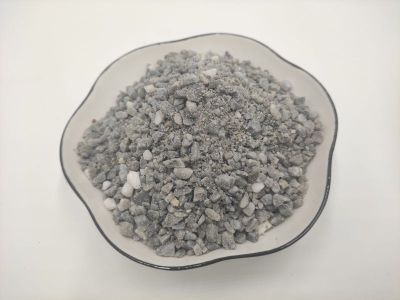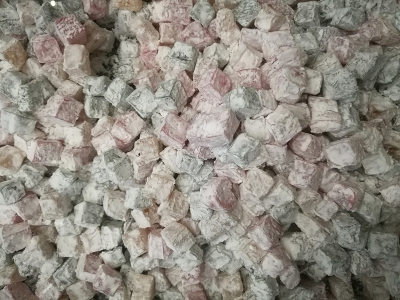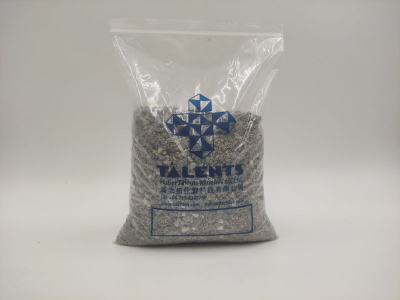barite white
Product Features:
Drilling grade barite are produced from natural barium sulfate ores.Commonly used as a weighting agent for all types of drilling fluids in oiland gas exploitation.
Our drilling barite manufactured to meet or exceed all APl 13 Arequirements.
This grade also can be used in the applications which high purity but lowwhiteness requirements.
Barite White, often referred to as white barite, is a naturally occurring mineral composed primarily of barium sulfate (BaSO₄). Due to its high specific gravity, chemical inertness, and white coloration, it is widely used across multiple industries such as oil and gas drilling, paints and coatings, plastics, and pharmaceuticals.
This article provides a detailed technical overview of barite white—covering its properties, processing methods, regulatory considerations, and practical applications.
Table of Contents
What Is Barite White?
Physical and Chemical Properties
Production and Processing
Key Industrial Applications
Engineering and Safety Considerations
Regulatory Standards and Quality Requirements
Handling and Storage Guidelines
Frequently Asked Questions (FAQs)
Conclusion and Professional Call to Action
1. What Is Barite White?
Barite (chemical formula BaSO₄) is a heavy, inert mineral with a naturally white or colorless appearance. The term “barite white” refers to high-purity, light-colored barite, commonly used where aesthetic or purity requirements are critical.
Primary sources: Barite is mined from sedimentary deposits worldwide, including China, India, Morocco, and the United States.
2. Physical and Chemical Properties
| Property | Typical Value |
|---|---|
| Chemical Composition | Barium sulfate (BaSO₄) ≥ 90-98% |
| Color | White to off-white |
| Specific Gravity | 4.2 – 4.5 |
| Mohs Hardness | 3 – 3.5 |
| Particle Size (D50) | 1–20 microns (powder grade) |
| Insoluble Residue | ≤ 0.5% |
| Brightness (ISO) | ≥ 85% |
| pH (10% slurry) | 6 – 9 |
3. Production and Processing
Mining and Beneficiation
Raw barite ore undergoes crushing, grinding, and washing to remove impurities such as quartz, calcite, and iron oxides. Processing techniques include:
Gravity separation
Flotation for fine particle separation
Magnetic separation (if iron contamination is present)
Milling and Grinding
For applications demanding fine powders, barite is milled to particle sizes as low as 1 micron using ball mills or vertical roller mills. Particle size distribution is critical for performance in coatings and plastics.
Surface Treatment (Optional)
To improve dispersibility in polymers or paints, barite powders may be surface treated with stearic acid or silane coupling agents.
4. Key Industrial Applications
4.1 Oil and Gas Drilling Fluids
Barite white is widely used as a weighting agent in drilling muds to control wellbore pressure. Its high specific gravity helps prevent blowouts while being chemically inert to drilling chemicals.
4.2 Paints and Coatings
Due to its whiteness and chemical stability, barite is used as an extender pigment in paints, improving brightness, opacity, and durability.
4.3 Plastics and Rubber
Barite serves as a filler material enhancing density, mechanical strength, and radiation shielding in plastic composites.
4.4 Pharmaceuticals and Medical Uses
Pharmaceutical-grade barite is used as a radiopaque agent in X-ray diagnostics.
5. Engineering and Safety Considerations
Particle size and distribution affect slurry rheology in drilling fluids and coating viscosity.
Chemical purity is critical to avoid reactions with other drilling additives or pigments.
Dust control measures must be implemented to reduce inhalation risks.
Barite is non-toxic, but inhaling fine dust may cause respiratory irritation.
6. Regulatory Standards and Quality Requirements
| Standard | Description |
|---|---|
| API Spec 13A | Oilfield drilling fluid barite specs |
| ASTM D96 | Standard specification for barite used in drilling fluids |
| ISO 13500 | Quality and test methods for barite in drilling fluids |
| GB/T 3356 (China) | Industrial barite quality standards |
| REACH / RoHS | Environmental compliance for industrial minerals |
7. Handling and Storage Guidelines
Store barite white in dry, ventilated warehouses to avoid moisture uptake.
Use dust extraction systems during handling to reduce airborne particulates.
Avoid mixing with incompatible chemicals to maintain purity.
Follow local regulations for transportation of mineral powders.
8. Frequently Asked Questions (FAQs)
Q1: What differentiates barite white from regular barite?
Barite white has higher purity, finer particle size, and superior whiteness suitable for specialty applications.
Q2: Is barite white hazardous to health?
Barite is generally safe but inhalation of fine dust should be avoided using protective masks.
Q3: Can barite white be recycled or reused?
In some cases, spent barite from drilling fluids can be reconditioned for reuse after cleaning.
Q4: What is the typical price range for barite white?
Prices vary based on purity and particle size but generally range from $100 to $300 per metric ton.
Q5: How does particle size affect barite’s performance?
Smaller particle sizes improve dispersion and surface finish but may increase slurry viscosity and dust generation.
9. Conclusion and Professional Call to Action
Barite White remains an indispensable mineral in industries requiring high-density, chemically inert, and aesthetically pleasing fillers and weighting agents. Whether in oilfield drilling, coatings, or plastics, ensuring compliance with API, ASTM, and ISO standards is critical to performance and safety.
Application Areas:
◆Oil drilling ◆Friction materials ◆Rubber ◆Radiation wall
Index | TLZ-DB01 | TLZ-DB02 |
Appearance | Granule | Granule |
Special gravity ≥ | 4.1 g/cm³ | 4.2 g/cm³ |
BaSO₄+ SrSO₄Content | 85% | 90% |
Hg ppm ≤ | 1 ppm | 1 ppm |
Cd ppm ≤ | 3 ppm | 3 ppm |
As ppm ≤ | 40 ppm | 40 ppm |
Pb ppm ≤ | 1000 ppm | 1000 ppm |
Si0₂Content | - | 3% max |
Fe₂O₃Content | - | 3% max |
Carbonates | 5000ppm max | 5000 ppm max |
Water Soluble Alkaline Earth Metals As Calcium ≤ | 250 mg/kg | 250 mg/kg |
Miosture | 2% | 2% |
Granule Size | 0-100 mm | 0-100 mm |





